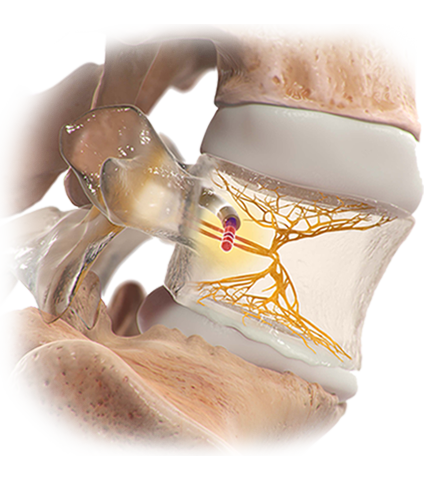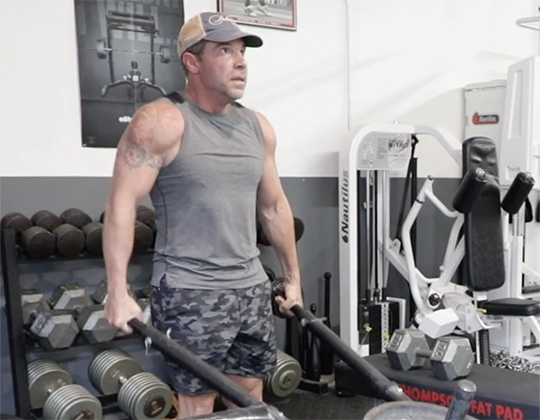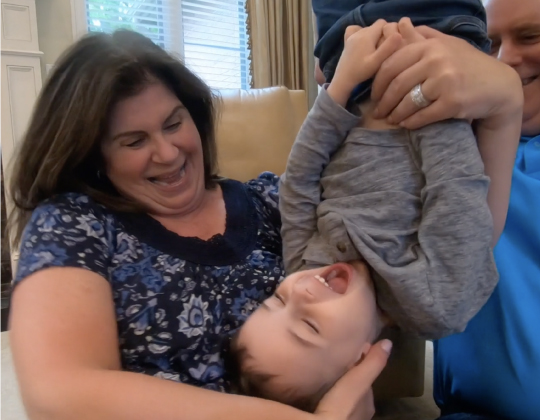Getting Back to Life.
Meet just a few of the patients who proudly tell their stories: The pain, finding Intracept, and living the proof of returning to their old pain-free selves.
Debbie’s Story
Multiple injections, multiple failed
approaches—nothing worked.
After years of chronic low back pain and multiple failed approaches, Debbie wasn’t able to enjoy her active lifestyle anymore – the medications, the physical therapy, the visits to the chiropractor, and the multiple injections just didn’t work.
She thought she had explored all her options and was disheartened when her doctor suggested a lumbar fusion – she just didn’t want surgery.
That’s when Debbie spoke to Dr. Kevin Macadaeg at the Indiana Spine Group. After a physical exam and review of her MRI, Dr. Macadaeg identified Debbie’s pain as vertebrogenic, originating from damaged endplates, and recommended the Intracept™ Procedure.
“Getting to know Debbie, she had a perfect story for someone we would expect with this type of back pain – multilevel degenerative disc with Modic changes,” said Dr. Macadaeg.
Five days after her Intracept procedure, Debbie swam for 30 minutes pain-free. Her back pain was gone and she began living her active lifestyle again. “My husband, who is 10 years younger than me, told me I make him feel old because of all I am doing these days. It’s incredible,” said Debbie.


Never Saying No Because of Your Low Back Pain: That’s Living Proof
Chronic low back pain steals so much from life. But until Relievant dove deep inside the vertebra, no one even knew it existed. Now we can diagnose and treat it with the proven, durable relief of the Intracept™ Procedure.
Curious? Let’s live the proof of the Intracept Procedure together.
As with any surgical procedure, there are risks and considerations associated with the Intracept Procedure. See important safety information below.
Physicians: See Indications, Contraindications, and Risks
Indications for Use: The Intracept™ Intraosseous Nerve Ablation System is intended to be used in conjunction with radiofrequency (RF) generators for the ablation of basivertebral nerves of the L3 through S1 vertebrae for the relief of chronic low back pain of at least six months duration that has not responded to at least six months of conservative care, and is also accompanied by features consistent with Type 1 or Type 2 Modic changes on an MRI such as inflammation, edema, vertebral endplate changes, disruption and fissuring of the endplate, vascularized fibrous tissues within the adjacent marrow, hypointensive signals (Type 1 Modic change), and changes to the vertebral body marrow including replacement of normal bone marrow by fat, and hyperintensive signals (Type 2 Modic change). Contraindications - Use of the Intracept Intraosseous Nerve Ablation System is contraindicated in: Patients with severe cardiac or pulmonary compromise, patients with active implantable pulse generators (e.g. pacemakers, defibrillators), patients where the targeted ablation zone is < 10 mm away from a sensitive structure not intended to be ablated, including the vertebral foramen (spinal canal), patients with active systemic infection or local infection in the area to be treated, patients who are pregnant, and/or skeletally immature patients (generally ≤ 18 years of age). Refer to the Instructions for Use provided with the Intracept Procedure or www.relievant.com/intracept/ for potential adverse effects, warnings, and precautions prior to using this product.
Caution: U.S. Federal law restricts this device to sale by or on the order of a physician.
Copyright © 2025 by Boston Scientific Corporation or its affiliates. All rights reserved.
Patients: See the Indications & Risks Involved
Contraindications include being pregnant, having weakened cardiac or pulmonary function, having an active implanted electronic medical device in the body (such as a pacemaker or defibrillator), being diagnosed with a systemic or local infection, or having an anatomy that could be damaged unintentionally while ablating the basivertebral nerve (based on your physicians’ clinical review). The Intracept Procedure is also contraindicated in patients who are skeletally immature – which generally means individuals under the age of 18 are not candidates. There are also certain risks and precautions regarding the procedure which you should be aware of before proceeding. Talk with your doctor about what indicates, and contraindicates, certain patients for the Intracept Procedure – as well as the risks and precautions for the procedure. For complete indications for use, contraindications, warnings, precautions, and side effects visit www.relievant.com/intracept/.
Caution: U.S. Federal law restricts this device to sale by or on the order of a physician.
Copyright © 2025 by Boston Scientific Corporation or its affiliates. All rights reserved.



















